Microscopes are now used in education, leisure and observation. This instrument, which magnifies objects invisible to the naked eye, comes in many models and price ranges. Whether you need a binocular optical microscope or a digital microscope, our guide to the best microscopes in 2020 will help you find the perfect one.
Here is our commitment, to make sure that we provide the best user experience and content quality:
You can support us by using our links to make your purchases (at no extra cost to you)! This sometimes earns us a commission which allows us to remain independent. More about us
Our selection
"Here you have a quality microscope with a USB input for photo and video and a corresponding cable, not to mention the CMOS sensor. It…"
"Despite its low price, the portable USB digital microscope offers excellent features: such as its magnification of up to 1000 times and its compatibility with…"
"You have here a very powerful professional microscope, with a magnification of up to 2500X. Ergonomic, it offers extended functionalities."
"You have here a very ergonomic professional microscope: it is equipped with interchangeable eyepieces with wide field of view 10X and 20X with adjustable interpupillary…"

Here you have a quality microscope with a USB input for photo and video and a corresponding cable, not to mention the CMOS sensor. It weighs 1 kg and comes with a case for transport.
122 £ on AmazonAre you a professional or a hobbyist looking for a high-performance microscope? The National Geographic 9039100 40 x 1024 may be just what you need. It can magnify the image from 40x to 1024x. It is equipped with 4x, 10x, 40xobjectives ;10x, 16x eyepieces; 1.6x Barlow lens; color filter wheel with apertures. It is also delivered with preparation tools (forceps, pipette); five blank slides, 20 coverslips; 5 preparations and a USB eyepiece with CD software.
It offers a range of accessories for beginners, such as dissection instruments, an electronic eyepiece . In addition, you will be able to get sharp and high quality images with the incident/transmitted illumination. The condenser allows you to adjust the brightness and contrast of the image.

Despite its low price, the portable USB digital microscope offers excellent features: such as its magnification of up to 1000 times and its compatibility with many peripherals.
19,99 £ on AmazonEnter the world of the infinitely small without breaking the bank with Bysameyee's portable digital microscope. This observation instrument offers a magnification range from 40 to 1000 times. Practical, you can detach it from its stand to point it directly on the object to observe. It is equipped with 8 LEDs and a button to adjust the brightness. To use it, you just need to connect it to a mobile terminal via the C type adapter.
Once the installation of the Amcap software is finished, you can connect it directly to your PC and start your observations on the screen. A button managing the zoom and snapshot functions is available, but requires the download of an in-house software thanks to the QR codes provided for use on an Android device. You can take pictures in JPEG or BMP format, and make videos in AVI format. It is compatible with Windows 7/8/10 Mac Linux under Android (with OTG).
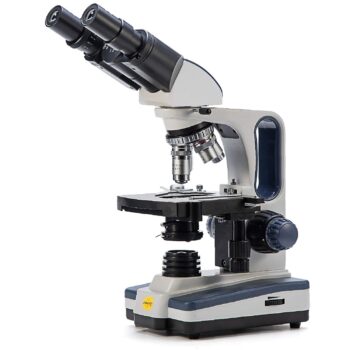
You have here a very powerful professional microscope, with a magnification of up to 2500X. Ergonomic, it offers extended functionalities.
208 £ on Amazon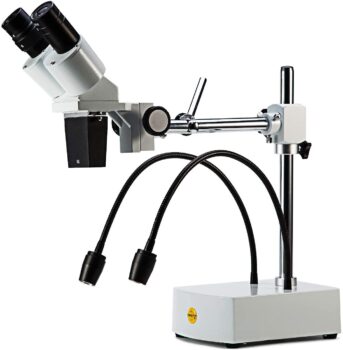
You have here a very ergonomic professional microscope: it is equipped with interchangeable eyepieces with wide field of view 10X and 20X with adjustable interpupillary distance.
184 £ on AmazonAny specific needs?
The best entry-level microscope
A versatile microscope with high performance
Your guide :
Rate this buying guide :By rating this buying guide, you are helping us to reward our best writers. Thank you!
| TOP OF THE TOP | CHEAP | TOP OF THE LINE | EXCELLENT | |

In accordance with our commitment, this buying guide does not contain any sponsored products. |
 9/10 |
 7/10 |
 8/10 |
 7/10 |
| OUR SELECTION |
National Geographic - USB eyepiece microscope
|
Bysameyee - USB digital microscope
|
Swift - SW350B
|
SWIFT - Stéréomicroscope SS41
|
|
Here you have a quality microscope with a USB input for photo and video and a corresponding cable, not to mention the CMOS sensor. It weighs 1 kg and comes with a case for transport.
|
Despite its low price, the portable USB digital microscope offers excellent features: such as its magnification of up to 1000 times and its compatibility with many peripherals.
|
You have here a very powerful professional microscope, with a magnification of up to 2500X. Ergonomic, it offers extended functionalities.
|
You have here a very ergonomic professional microscope: it is equipped with interchangeable eyepieces with wide field of view 10X and 20X with adjustable interpupillary distance.
|
|
|
Ease of use
|
|
|
|
|
|
Weight
|
1,000 g
|
160 g
|
4740 g
|
6000 g
|
|
Grossness
|
40 to 1024X
|
40 to 1000X
|
40 to 2500X
|
10x and 20x
|
|
Luminosity
|
|
|
|
|
|
Power supply
|
USB
|
USB
|
On mains
|
On mains
|
Help us improve this table:
Report an error, request the addition of a feature to the table, or suggest another product. Thank you for your kindness!
We spend thousands of hours each year studying the major specialized websites, analyzing products of hundreds of brands and reading user feedback to advise you on the best products.
We are a product review company with a single mission: to simplify your buying decisions. Our research and testing helps millions of people every year find the best products for their personal needs and budget.
To support us you can: use our links to make your purchases (which often earns us a small commission), share our articles on social networks, or recommend our site on your blog. Thanks in advance for your support!
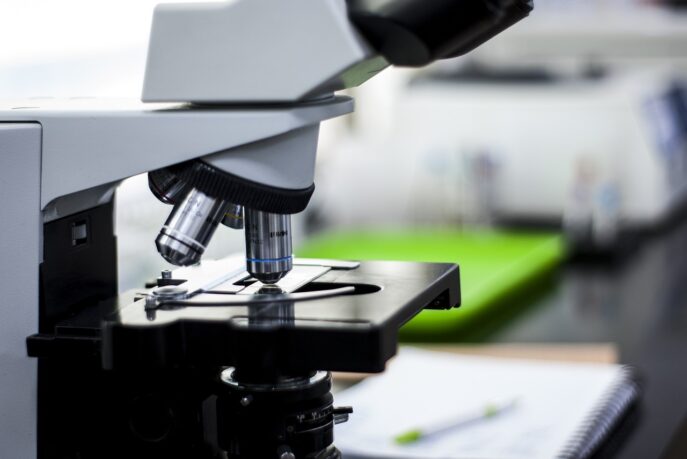
The objective of a microscope allows to magnify the images without distorting them. There are 2 kinds of objectives: achromatic and plan-achromatic objectives. With the former, we can correct chromatic aberrations (color defects), while the latter allow to correct chromatic aberrations but also the flatness on the perimeter of the images.
According to the use to which we predestine the microscope, but also according to the comfort of use reloaded, we have the choice between monocular models, binoculars and trinocular microscopes. The first ones are perfect for beginners because of their simplicity. However, as the name implies, observation is done with only one eye. Binoculars offer greater visual comfort, with the possibility of using both eyes at the same time. This type of apparatus is more adapted to the experienced public, just like the trinocular microscopes which in addition to the 2 eyepieces can be equipped with a camera.
According to the way in which the samples are fixed, one has the choice between the microscopes with shutters, provided with a simple and easy but not very precise fixing, and the microscopes with plates which them, offer an optimal comfort long duration. The choice will depend a lot on the precision sought but also on the budget.
Very
important especially for experienced users, the condenser is a device that allows to have a greater sharpness of the observed images, especially for high magnification work. It collects the light from the light source of the microscope to concentrate it on the cone in charge of illuminating the sample. Depending on the microscope model, there are platinum condensers that offer more sharpness and contrast, and Abbe condensers that feature a larger numerical aperture.
For a good microscopic focus, one must necessarily use magnification controls. There are generally 2 kinds: separate controls, ideal for beginners because they allow a simple focusing, and coaxial controls, more comfortable certainly, but which require some practice. This type of controls is more recommended for experienced users.
Within the family of optical microscopes, we distinguish between monocular, binocular and trinocular. It is the number of eyepieces that differentiates them.
Monocular microscope
As its name indicates, this type of optical microscope has only one eyepiece and the observer uses only one eye. Although easy to use and more suitable for children, they are characterized by their lesser comfort of use. Therefore, they are not intended for long observations.
Binocular microscope
Binocular microscopes allow to use both eyes at the same time during the observation, which avoids eye muscle fatigue. For these reasons, they are particularly suitable for long observations, in the laboratory for example. Their prices are often higher than monocular models.
Trinocular microscope
In addition to the two observation eyepieces, this type of optical microscope has a third "tube" that serves as a camera. Placed on top, it is used to make microphotography, take pictures and film the observations made. Like their binocular counterparts, trinocular microscopes are dedicated to professional use such as biology or medicine.
If you are looking for an optical microscope for children, choose a model with a straight head, less precise but easier to use. This is because the eyepiece moves and the platform remains fixed. Microscopes with an inclined head are suitable for users who need to make long observations, hence their better ergonomics.
There are three main types of microscopes that differ in the way they work. They are intended for a more or less different audience and uses.
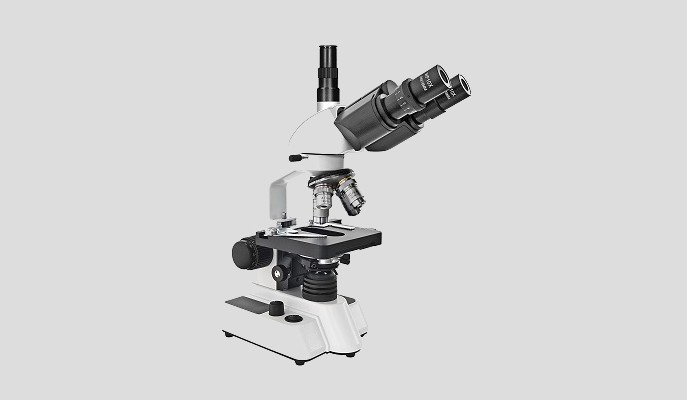
They are equipped with objectives and eyepieces which, when combined, allow very high magnifications to be obtained. The magnification capacity of the objectives is indicated on the accessory, but does not determine the magnification power of the microscope. To obtain it, it is necessary to multiply the ratio of magnification of the eyepiece with that of the objective.
The quality of the image obtained depends primarily on that of the objective because it is it which will provide the image known as intermediate image. This image will be magnified again by the lenses located in the eyepiece. Although it allows long observations with a high image quality
, the optical microscope does not offer the mobility of its digital equivalent.

More
and more in vogue today, digital microscopes seduce by their simplicity of use. Indeed, in addition to being compact, they are easily manipulated, being composed only of a microscope body that integrates the lighting system. They include pocket microscopes and models that connect to computer and mobile devices. They allow the observation of surfaces or objects in their environment
, while benefiting from an excellent image resolution and a magnification force sometimes equivalent to that of an optical microscope.
Digital microscopes offer the possibility to take pictures of the observed objects like a camera, or to make videos. Their price is much more affordable than optical models, but they generally lack the build quality of the latter.
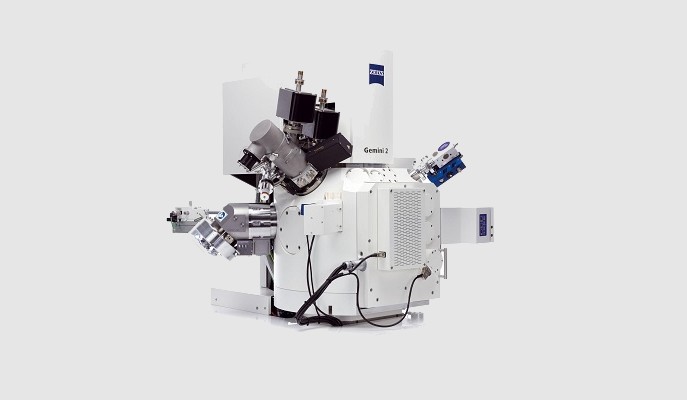
Reserved for professional or high-end use, electron microscopes, as their name implies, use electrons to magnify bodies or objects invisible to the naked eye. The device emits a beam of electrons that will pass through the preparation to be observed. This type of technology allows extremely high levels of detail and magnification to be achieved, for example, to make observations at the cellular level.
Nevertheless, electron microscopes are not within the budget of simple microscopy enthusiasts, since their prices can exceed 100,000 euros. Moreover, their technical specificities do not correspond to the needs related to leisure or educational observations.
The digital microscope offers a magnification force often very important as well as a better image quality. It can be used for a variety of needs, whether for leisure, research or education. It can offer various levels of comfort depending on the type, quality and number of eyepieces and objectives. It is intended for fixed domestic use only.
Thanks to its mobility, the digital microscope allows to multiply the possibilities of use. It meets the needs of a wider public and is an observation instrument that everyone must have. Its attractive price and its simplicity of use make it a popular type of microscope which finds its place in many homes.
If you need a microscope to observe objects or surfaces in their environment, the digital microscope, often portable, is for you. It is suitable for use by the whole family.
If, on the other hand, you need a powerful instrument to observe in greater depth, an optical microscope is ideal. This type of microscope exists in domestic models dedicated to the whole family, but also to students, college students and high school students.
To observe
The microscope is first and foremost used to observe and examine elements or particles that are difficult to see with the naked eye. It is for this reason that it is widely used in the medical and biological world where it has allowed and still allows to make a lot of progress by helping to observe tissues and microscopic cells.
To learn
When we put a particle under the microscope, we study it in great detail, which allows us to better understand its behavior and the elements that make it up. This is one of the reasons why the microscope is considered a good way to arouse children's curiosity. Some parents do not hesitate to choose it as a first choice gift for their children because of its usefulness, compared to game consoles or remote control cars.
To share
Using a microscope, one can take pictures of the microscopic preparations to make up photographic plates to be sent by email to other mycologists for confirmation of observations, or simply to share them with other microscopic enthusiasts.
To identify
One of the greatest uses of the microscope is its ability to differentiate elements with the same basic characteristics. Many species of fungi, for example, can only be identified by observing their microscopic elements.
For the fun of it
Immersing oneself in the microscopic world is for many people a passion, just like horseback riding, climbing or reading. It is indeed a hobby that perfectly combines the useful with the pleasant, allowing to discover every day new things unknown to the general public.
In our opinion, the best brands of microscopes in 2022 are :
Founded in 1957 by Josef Bresser, the Bresser brand enjoys a worldwide reputation in the field of optical instruments. Its BioScience line of microscopes offer exceptional qualities.
Swift is an American brand of optical instruments with over 50 years of experience. Based in Texas, the Swift brand has as leitmotivs to propose products of excellence, as solid as technically performing.
Based on more than a century of know-how in the optical field, Nikon is today one of the largest manufacturers of microscopes. Its models are reserved for advanced uses such as research and health, which testifies to their superior quality.
Created more than 175 years ago by Gottlieb KERN, the KERN brand is among the largest manufacturers of optical instruments. Its products comply with the highest quality standards.
Olympus is one of the world's leading manufacturers of optical products. The brand was founded in 1919 by Takeshi Yamashita, and is among the leading manufacturers of medical instruments, including microscopes for medical use.
The diagram below will help you to get an idea of the typical prices for each price range (entry-level, mid-range and high-end).
However, more expensive does not necessarily mean better.
We therefore advise you to always consult our ranking before deciding, rather than blindly relying on price ranges.
Handle with care.
Improper handling is a common cause of many problems that occur with microscopes. When carrying a microscope, hold it by the base and metal support arm.
Care for your lenses.
When
you use your microscope, the objective lens is lowered to adjust the
focus.
However, be careful not to let the objective lens touch the slide you are looking at, as this can damage the lens. Also, dirty lenses are notoriously difficult to clean, so avoid getting them dirty as much as possible.
Store in a safe place.
Store
your microscope in a clean, dry, well-ventilated area. Salty or humid air, for example, can damage the equipment over time. Expensive precision equipment should not be stored near solutions that could leak. Similarly, keep your microscope away from areas with potentially corrosive chemical fumes. Such fumes can destroy lenses or erode metal parts.
Care for blisters.
After
using your microscope, turn off the illuminator and wait for it to cool before storing it. Allowing the bulb to cool will extend its life and avoid the unnecessary cost of expensive replacements. Also, if used constantly at full power, the bulb will overheat (and may even explode). Also, remember to turn off the illuminator when not in use.
Clean thoroughly.
Microscope lenses are delicate. Treat them with care to avoid any scratches. Use a vacuum cleaner to remove dust. Moisten the special lens paper with distilled water or a suitable cleaning solution. Gently rubbing in circular motions will remove any sticky residue. Never use abrasives on microscope lenses.
The best microscope depends on your needs and budget. Read our buying guide for the best products out there.
Not all types of objects can be observed on the same type of microscope. To observe preparations on a slide, you need to use an optical microscope with a valet or stage. For objects in relief, a digital microscope is ideal.
Most digital microscopes run on recent versions of Windows, but also on Linux and Mac, not to mention Android devices. Compatibility depends on the manufacturer.
Some models of light microscopes can be connected to a monitor to view live observations, via an HD camera that fits on the eyepieces or on one of the eyepieces. This camera can be supplied with the microscope, or to be purchased as an option.
Depending on the type of device, a microscope can benefit from a manufacturer's warranty. This is most often the case for high-end products or those of major brands.
Every month we help more than 1 000 000 people buy better and smarter.
Copyright © 2022 - Made with ♥ by buyingbetter.co.uk
Your reviews and buying guides 0% advertising, 100% independent!